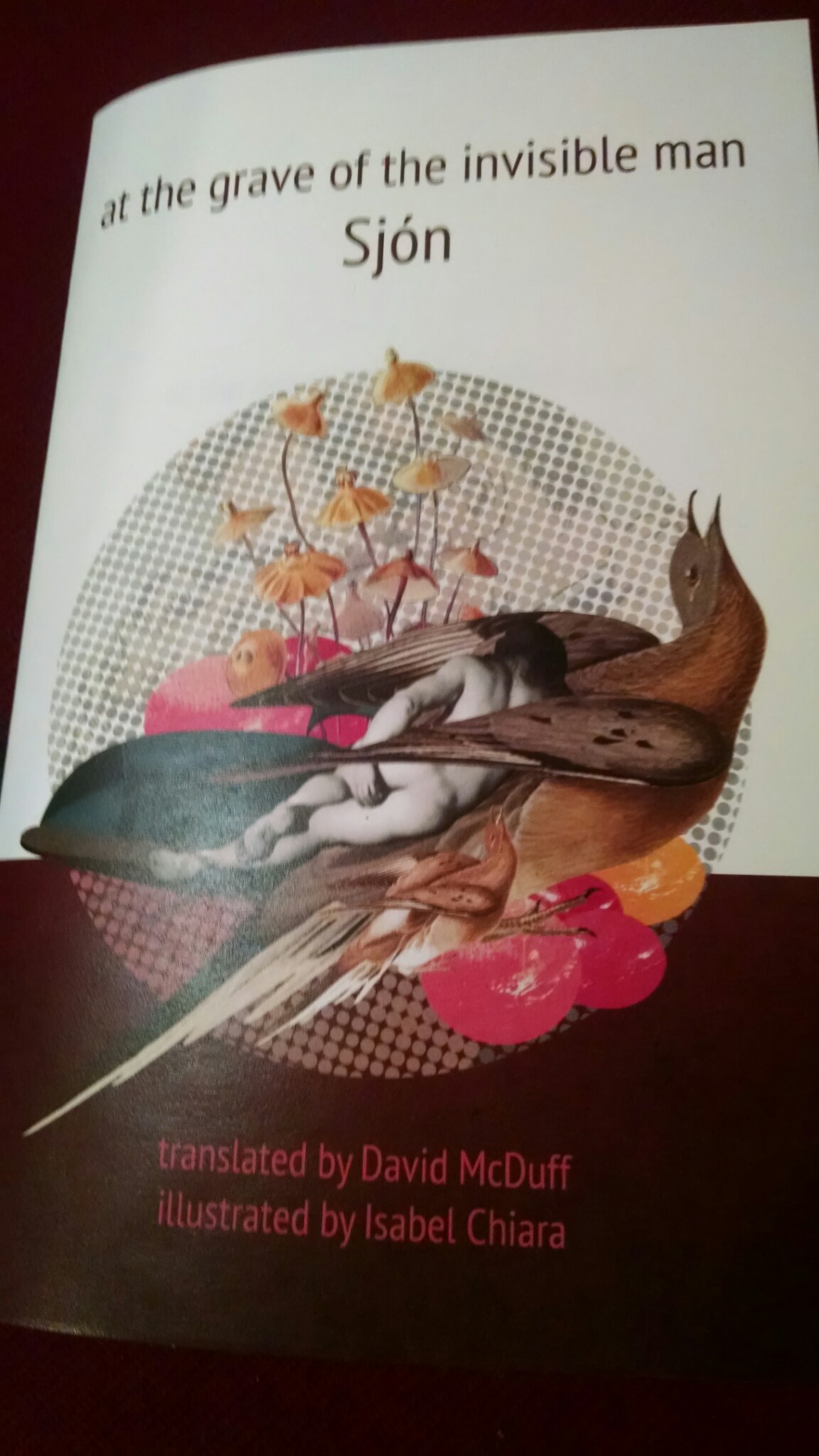Björk’s new album is deservedly getting a lot of attention, but there is another, much quieter release from an Icelandic artist – literally quieter. It’s not an album, it’s a poetry chapbook. Wait! Don’t go! I know what it sounds like. It sounds like photocopied, stapled pages sold out of a backpack on the sidewalk by attractive yet poorly groomed, self-absorbed youths. If you buy a copy (out of an impulse to support the arts, and greatness might appear anywhere, even in a homeless kid; or you want to help the homeless; or simply because you’re charmed by the poet’s combination of sincerity and homemade tattoos) inside the pages you will find verses without rhyme or meter or quite possibly, meaning. I know. That’s usually what it means. But I’m talking about Sjón here.
Introducing Sjon
I feel like Sjón, who as a lyricist has often contributed to Björk’s WTFness, doesn’t need an introduction. Regular readers of this blog will already be familiar with his book Whispering Muse, and will remember my awe at hearing him read at Iceland Writers Retreat. But though Sjón looms large in my literary landscape, I don’t know how widely known he is.
Chapbook
Spolia (the literary magazine associated with The Bookslut) has released a chapbook of Sjón’s poems called at the grave of the invisible man, translated by David McDuff and printed on high quality paper. Isabel Chiara has illustrated the book with full color collages drawing from imagery in the poems themselves. Stylistically reminiscent of Terry Gilliam’s animations for Monty Python, they make his images feel like highly structured narratives by contrast.
Poems
Sjón’s poems are, as one might expect, even more opaque than his novels. (How can such slender, airy novels simultaneously be so dense?) I am as frustrated reading this chapbook as I have been by everything of his I’ve read. Why have I made no progress? Have I spent too much time reading genre fiction and not enough time challenging myself with more serious literature?
Inadequate Training
Sjón’s verses have no rhyme or meter or quite possibly, meaning. Which is to say, whatever they mean, I can not make sense of them. In school I learned about meter and rhyme. I learned the Victorian symbology of flowers and the medieval metaphors for redemption. But I have no skills for evaluating modern poetry. I have absolutely no idea what “bird wings nailed to joints” refers to, no clue what significance a hashish seller whispering about chocolate could have.
Are the bolded parenthetical phrases titles if they bookend the poem? In “Eyes” (or is it “Eyes and Eyes”?) I can appreciate the way the line breaks create ambiguity.
you saw me in the garden
like an angel
I was giving children sugar buns
Is the viewer watching over him like an angel? Or is he angelic for distributing treats? Chiara’s illustration is no help – the only angels are cherubs clambering toward the buns. But it is not the occasional puny flash of insight that makes me appreciate Sjón.
Evaluating Anyway
I believe Sjón’s chapbook to be superior to the ones I’ve bought off the sidewalk because
-
The company he keeps. He has worked with and is respected by people whose work I do get and enjoy.
-
His spoken words (recorded in interviews and at the reading) are clear, engaging, and intelligent.
And so, when I have the courage, I try to read Sjón again.
I’ve been thinking a lot lately about the value of genre versus more literary work and nonfiction.
-
Nonfiction gets a pass because the value of information is self-evident.
-
Research has shown that from a technical point of view, children develop vocabulary and reading skills from reading, regardless of the “quality” or type of text.
-
Librarians are adamant that all fiction develops empathy.
So why should anyone work up a sweat for a challenging book when they will never run out of good, easy, fun reading?
Sensational
I have an answer. It is the final reason that I believe Sjón’s poems to be more literary than roadside chapbooks. When I read those books I am bored. When I read Sjón, confusion is paired with another sensation, a feeling very much like that of being touched in a new place. When foreign hands contact some part of your body where no one else has been before, sparks fly in new directions, neural connections form that would never develop in a hundred readings of more comfortable materials.
As I was reading at the grave of the invisible man, knowing that I would blog about it, I kept thinking, “What can I possibly say about this? I don’t have any insights.” All that came to mind was “geologic colors of sickness.” The phrase is not poetry, but it is also not how my brain usually works.
That tingly touch awakening the mind to new possibilities is missing in more pedestrian work. It is also, I think, work working up a sweat for.
I purchased my copy of at the grave of the invisible man from Spolia’s Etsy page. I suggest you do the same.







About the author